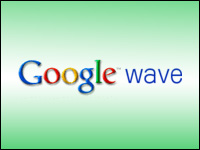
If you want to splash around in Google Wave right now — the search giant’s new real-time communication/collaboration tool that received plenty of tech press hype during a May unveiling — then you have to be a developer with access to the API (application programming interface). However, that will change on Sept. 30, when Google will let 100,000 curious users take Wave for a test swim.
Just don’t call it a beta, said Google spokesperson Sara Jew-Lim. “We announced earlier this week that we will be extending this preview to a small group of consumers, but I wouldn’t characterize this as a ‘beta’ release,” Jew-Lim told TechNewsWorld. “The product will still be a bit rough at that point, and the team will still be working to ready Wave for a true consumer launch.”
Hence, no dates for a wide product release yet, although a Monday posting on the Google Wave Developer Blog did give some new snippets of information since Wave was showcased at the Google I/O conference seven weeks ago. “We’ve already rolled out roughly 6,000 developer accounts and we’re working through an additional 20,000 requests over the course of the next month,” product manager Dan Petersen wrote. “On the Google Wave team, we’ve also been hard at work improving the sandbox’s stability and performance, as well as enhancing the APIs available.”
Early Peeks at Wave
The new details come as Google’s Mountain View, Calif., campus plays host to the Google Wave API Hackathon and some 150 developers from around the world, all writing code under the watchful eyes of Peterson and other product managers.
Peterson’s blog post does include links to the Google Wave Samples Gallery, which provides early glimpses of how developers are taking the Wave source code and building out new ways for users to connect and share with others. Highlighted projects include a tool that lets users create groups and manage subscriptions; a JavaScript-based game involving colored squares, a weather data widget and a feature allowing sharing of Waves in the popular WordPress blog creation engine.
Also let us not forget the Rickroll widget; even Wave is not immune to the obligatory Rick Astley video prank meme.
Google wants more feedback on what’s been built so far, Peterson said, and it wants more developers to play in its Wave sandbox before product launch. “As we have mentioned in the past, our goal is that extensions built by third parties feel fully on-par with Google Wave’s native features to users. We know we have some way to go and really appreciate your help in getting there,” Peterson wrote.
Getting Wave Ready for Prime Time
Tuesday’s Hackathon activities at Mountain View include something called “Federation Day.” While it sounds like something celebrated in the “Star Trek” universe, it’s actually a series of sessions targeting rules of the road for those who will be sharing Waves between Wave providers.
“Yes, that’s between wave providers,” wrote Peterson in a May 28 posting on the Wave Protocol Web site. “Anyone can build a wave server and interoperate, much like anyone can run their own SMTP (Simple Mail Transfer Protocol, the foundation for all email) server. The Wave protocol is open to contributions by the broader community with the goal to continue to improve how we share information, together.”
That would explain why Federation Day sessions include panels on security and spam abuse.



















































